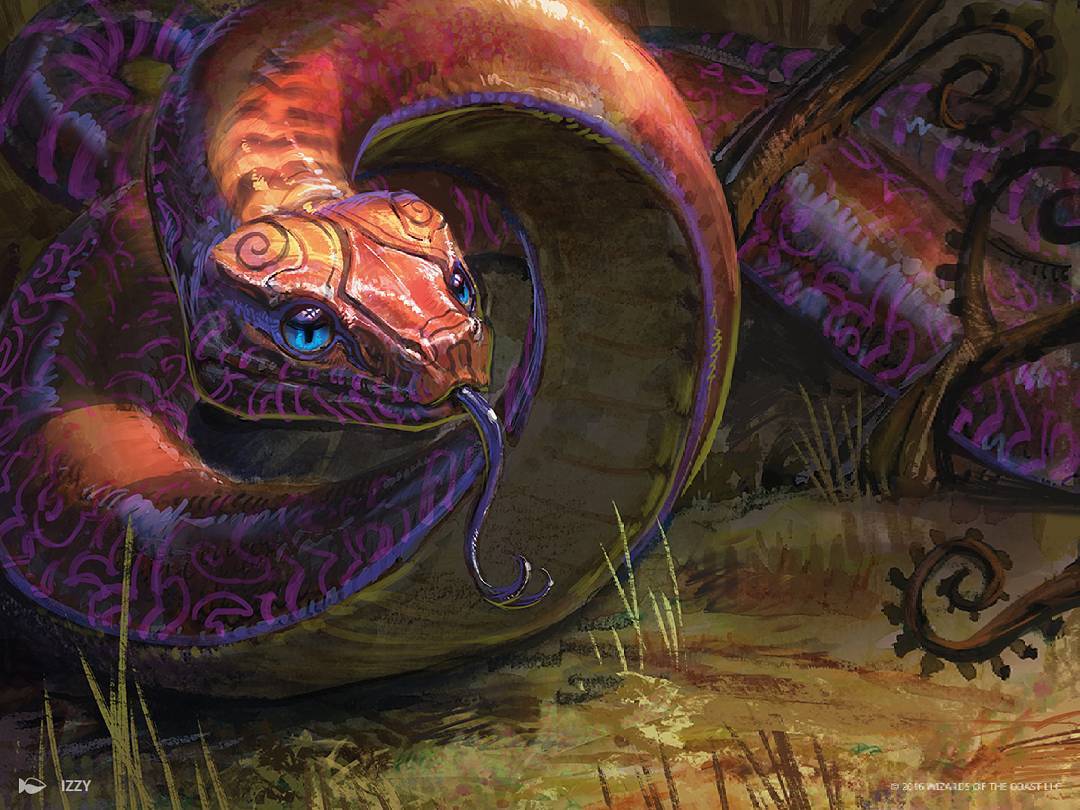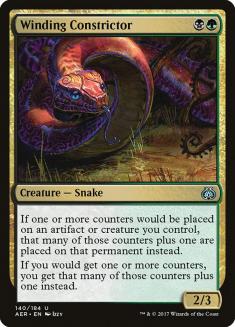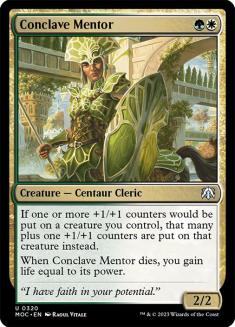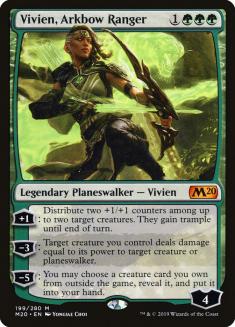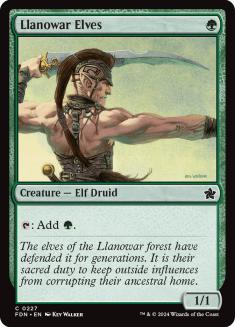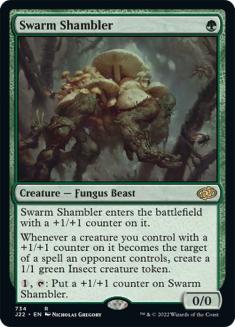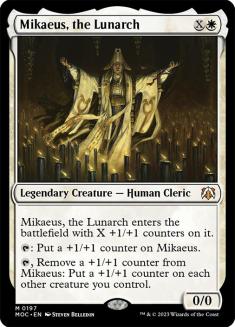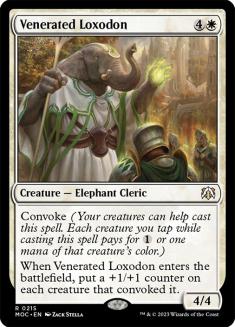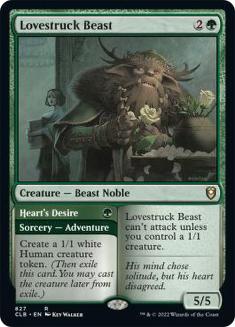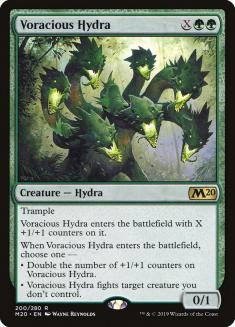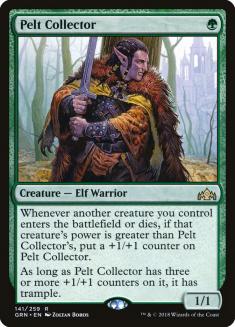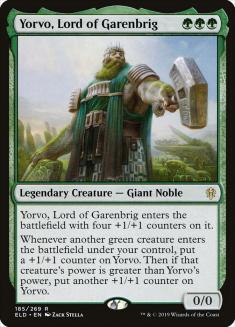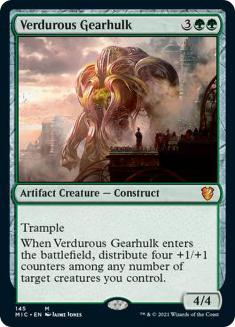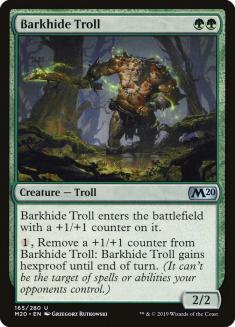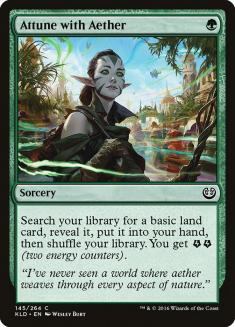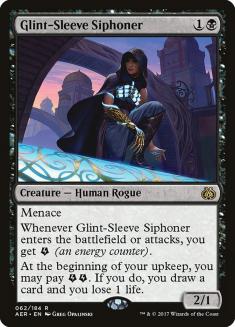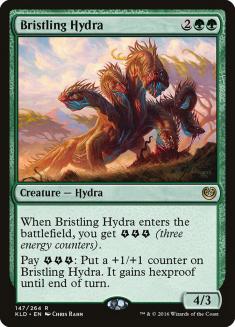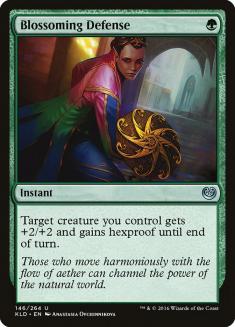With Kaladesh Remastered coming to Magic Arena, we’re getting a lot of cool new toys for Historic. One of those toys just so happens to be one of my favorite Magic cards of all time — Winding Constrictor.
Today’s article will feature three decks that are built around a specific core of cards. No matter what you change in the rest of the list, these four cards probably shouldn’t be changed. I’m a firm believer in nothing being untouchable, but these are the cards I feel best exude this particular strategy. Without further ado, let’s get to the show.
The Counters Core
It’s hard to judge Winding Constrictor in a format without Walking Ballista. The ban in Pioneer likely shaped their views on adding to the set, which means Winding Constrictor’s best buddy likely won’t ever exist in Historic, but maybe that’s okay. Walking Ballista was one helluva card after all, so it’s probably better it sits on the sidelines for now. Historic will eventually become Pioneer, or vice versa, so having the formats somewhat in unison when possible is wanted.
Winding Constrictor is not some new card that needs to be thoroughly explained. It doubles counters of most sorts and we actually have a newer card that I’ve written about a time or two that mirrors most of the good parts of Winding Constrictor with an added twist:
The pair of Conclave Mentor and Winding Constrictor can be a powerful core that allows for some absurd starts. Pelt Collector into either of these two-drops can lead to landslide games where your 3/3 puts so much pressure on the opponent that they can’t catch back up. On top of that, every creature or permanent you deploy after that doubles counters put on the early-drops. Some of those abilities also add special abilities like trample, which makes playing defense outside of removal spells mostly pointless because you’ll outgrow them. So then the trick becomes figuring out how to be resilient to removal spells.
Vivien, Arkbow Ranger is another heater made in the last few years that I’ve grown quite fond of. It’s quite literally brought me to the brink of a Pro Tour-equivalent invite multiple times in Pioneer. I can only imagine how powerful it can be in Historic given the right circumstances, though the obvious angle of ramping into Ulamog, the Ceaseless Hunger isn’t really here without Nykthos, Shrine to Nyx.
Vivien, Arkbow Ranger has a ton of versatility in how you use it. For starters, the permanent pump ability is made absurd by the pair of two-drops at your disposal. Giving a permanent +2/+2 is huge, but trample can also be important in most builds. This is the obvious ability to use most of the time, but the X-factor of Vivien comes from the situations where you use one of the other two abilities. “Biting” a creature with the minus ability is an easy way to kill an opposing creature in your deck that features very little removal. It can also tag planeswalkers. The ultimate is not as potent here as it was in Mono-Green Devotion but it’s still pretty sweet, and we have quite a few nice ones in the sideboard waiting for their spot.
I’m mostly excited to play with Winding Constrictor because I think it makes Vivien, Arkbow Ranger playable in Historic.
This little creature is probably one of the better cards in Historic, if only because there aren’t that many ways for one-drop threats to affect the game in significant ways. Llanowar Elves, if left unfettered, can completely shove you to the mid-game before your opponent is out of their development stage. We all know how important mana generation can be in a game, and most of us have been on the wrong side of a Llanowar Elves into three-drop that completely dumpstered us. I mostly want to include it here because I think it’s likely the best green card in Historic, even if we aren’t accelerating into a quick three-drop each time.
Llanowar Elves as a body is actually pretty big in this archetype. Getting your late-game up and running in a shorter timeframe is nice, but doing so while providing a body for Vivien, Arkbow Ranger or similar is huge. That 1/1 body can grow so large without much effort, and it showcases how important any one body can be in a deck featuring eight of a similar double-counter effect.
All Counters, All the Time
The first deck we’re discussing will feature a much heavier +1/+1 counter theme than the rest. This is because I’m under the impression that moving “all-in” on this style of deck might not be the best idea. While your deck is built around such cards, choosing a spell that adds +1/+1 counters over another that doesn’t isn’t always desirable. Obviously you want to get full value out of all your cards, but it’s also important to understand moving in this direction makes you much more one-dimensional, which in turn makes you more exploitable.
Here’s my first build of Abzan Counters for Historic.
Creatures (32)
- 4 Llanowar Elves
- 2 Mikaeus, the Lunarch
- 4 Winding Constrictor
- 2 Rishkar, Peema Renegade
- 4 Venerated Loxodon
- 4 Voracious Hydra
- 4 Lovestruck Beast
- 4 Conclave Mentor
- 4 Swarm Shambler
Planeswalkers (4)
Lands (23)
Spells (1)

This one might be too weak for the archetype in general, but I wanted to push the counter theme and see if I could make Swarm Shambler good. It’s strong in a format where everyone is targeting your creatures with removal, as you just want a high raw number of bodies to gain buffs from your pump effects. Swarm Shambler as a card is just a body, but for one mana it has quite a lot of text.
I’m honestly not sure how this card made its way into Historic, but I’m quite glad. I loved Mikaeus, the Lunarch in all the old Lingering Souls decks back during Innistrad Standard and Block Constructed. I can only imagine how well it lines up with Winding Constrictor and Conclave Mentor, two cards that absolutely love it when all your creatures gain a +1/+1 counter.
Mikaeus won’t revolutionize the game, but it’s a great replacement effect for the missing Nissa, Voice of Zendikar (it might be a minute or two before we get that one). Regardless, Mikaeus is one of those single-dimension cards I was talking about. It does some cool and good stuff, but only makes you more vulnerable to the types of cards that can dismantle your strategy. With that said, I’m okay overextending a bit in some matchups, and there aren’t many good options for doing this type of thing outside of one-time deals like Basri’s Solidarity.
This one, like Mikaeus, is one-dimensional, but extremely powerful given the right set of circumstances. Normally you see Venerated Loxodon in a deck featuring a lot of token generators to maximize the effect. We could go that route for sure, and it might be worth exploring in a version that goes super-hard on one-shot effects like Basri’s Solidarity and Mikaeus. Regardless, Venerated Loxodon paired with Winding Constrictor is pretty messed-up.
A no-brainer in most green decks, Lovestruck Beast pulls double duty here. Not only do you have a few other cards that make 1/1s, but you also just so happen to need multiple bodies pretty regularly and one of those bodies just so happens to be white for convoking Venerated Loxodon. This also helps me solve the problem of playing more one-drop creatures for Venerated Loxodon without lowering the overall power level of the strategy. You need some cards to stand on their own, even if they get a lot better when paired with others.
This one almost made the “core” but I don’t think it necessarily goes into every build. Voracious Hydra is much stronger in a world where you’re generating a ton of mana, and I don’t think we want to play something like Castle Garenbrig, which means we’re going to have weaker Voracious Hydras than I’m used to. I do think it’s still good, and quite strong in archetypes that want some form of interaction without sacrificing a high raw number of bodies. It gets out of hand quickly, and is one of your best draws at most points in any game, acting as removal or the biggest creature you have access to.
Voracious Hydra is also just strong because it can be cast under virtually any circumstance. Most opponents will have something to fight, all along the curve, which means a Llanowar Elves start might lead to some absolute blowouts.
This version is all about pushing the counters theme, but I’m not sure I went far enough. I want to explore the archetype fully, but I doubt I’ll be able to do that until the set’s release.
Go Big or Go Home
Creatures (30)
- 4 Llanowar Elves
- 2 Verdurous Gearhulk
- 4 Winding Constrictor
- 2 Rishkar, Peema Renegade
- 4 Pelt Collector
- 3 Barkhide Troll
- 4 Voracious Hydra
- 3 Yorvo, Lord of Garenbrig
- 4 Conclave Mentor
Planeswalkers (4)
Lands (25)
Spells (1)

This version of Abzan Counters is going a bit thiccer than usual. We want our creatures to be formidable by themselves, almost like a Mono-Green Aggro deck. When our creatures work together, they get a lot bigger and a lot meaner, but that doesn’t mean we’re all-in on the counters synergy like the previous iteration. You’ll notice fewer landslide games with this version, but you won’t be as vulnerable to spot removal or sweepers because you won’t have to add much to the battlefield to be dangerous.
I’ve waffled on putting this one in every deck featuring Winding Constrictor and Conclave Mentor because that one-two start is quite strong. I am valuing synergy over raw power in the other two builds, but this one is all about hitting as hard as you can as quickly as you can. We aren’t waiting on Venerated Loxodon because our creatures are already big enough.
Pelt Collector can get out of hand quickly in this deck. The dream curve of Pelt Collector into Winding Constrictor into Yorvo, Lord of Garenbrig or even just Rishkar, Peema Renegade allows for some outrageous damage. Against an opponent who isn’t interacting or putting up much defense, this type of start is usually overwhelming. Counter-based strategies often shine in formats full of goldfish decks because you have more consistency and your average draw is just better than most due to that consistency. That consistency comes from having multiple cards generating the same type of effect. Think Infect or Burn in Modern. It’s not really a combo deck, but it does play out like one sometimes.
Speaking of Yorvo, this can can really pack on the pounds when you have a one of your premier two-drops on the battlefield. Every creature giving it two counters is a big deal, making it a huge threat for a very small investment. When you give it trample via Vivien, the game ends rather quickly. In the grand scheme of things, Yorvo is just a big dumb idiot but that’s exactly what you need in this kind of build.
Yet another big dumb idiot, Verdurous Gearhulk is a great reason to play Llanowar Elves! It’s absolutely ridiculous when you have one of your two-drops on the battlefield, but the five-mana requirement is quite a downside. Five has never been “easy” in Magic, and having that five-drop do something incredible is old hat at this point.
Regardless, given where we’re going in this build, Verderous Gearhulk seems to fit perfectly. Let’s get big and let’s do it quickly.
This one is still mostly experimental, but I’ve seen good things happen in Standard so I’m willing to give it a shot. Alongside Conclave Mentor or Winding Constrictor, it can grow larger than normal, but it can also use its protection ability more often than normal. One of the easiest ways for someone to get a leg up on you is to continually smoosh your creatures with removal or sweeper effects. Barkhide Troll protects you from the spot removal and is a fine creature to shove on. It also just so happens to be a 3/3 for two mana, which can lead to some powerful starts in games where you don’t have Winding Constrictor or Conclave Mentor.
Sending You My Energy
Creatures (25)
- 4 Llanowar Elves
- 4 Longtusk Cub
- 3 Bristling Hydra
- 4 Winding Constrictor
- 2 Rishkar, Peema Renegade
- 4 Glint-Sleeve Siphoner
- 4 Conclave Mentor
Planeswalkers (4)
Lands (21)
Spells (10)

This iteration harkens back to the first days in Aether Revolt where we had all sorts of energy builds featuring Winding Constrictor. Pairing it with some of these energy generators is a no-brainer because it doubles those energy counters. Unfortunately, Conclave Mentor doesn’t do that, but the minor energy theme is mostly related to putting +1/+1 counters on your creatures. Here, Winding Constrictor does double duty where Conclave Mentor is just doing its thing.
I was actually surprised to see all the energy cards come back. I figured banning a bunch in Standard might make them leave out some of the bigger nuisances. The ease at which you generate energy is comical, and the color fixing given to you three- or four-color decks makes Attune with Aether a slam dunk. Pairing it with Aether Hub is also pretty free.
This is the one card I wanted to build around more than anything else becaues I feel like it can be the two-drop that changes the format. Glint-Sleeve Siphoner was always strong, and I’m glad it finally made its way into Historic. The parallels to Dark Confidant are obvious, but the energy engine is potent enough to make sure you always have a good use for it, even if Glint-Sleeve Siphoner is dead.
One thing to note is that drawing a bunch of extra cards is better when you’re doing some type of interacting. I’ve chosen Fatal Push here instead of Thoughtseize because I want to dominate the battlefield, and doing so occasionally requires spot removal. It’s dead against combo and control, but often necessary against creature-based decks.
Both a huge energy generator and huge threat, Longtusk Cub gains a lot from having two creatures that double its counters. On top of that, giving it trample with Vivien, Arkbow Ranger can occasionally end games that you had no business winning. The main problem with Longtusk Cub is not being able to connect with it, but giving it trample makes that a lot easier. Clearing blockers early with Fatal Push is also huge.
This version is much lower to the ground, offering a bunch of powerful two-drops that are all “must-kill.” When that’s the case, you can often overload your opponent’s removal. I believe we’ll be able to do that easily.
Another creature on the list of “annoying by itself but busted with a large amount of energy,” Bristling Hydra is starting to bring back all sorts of cool memories. I’m interested in building around this creature again if only because it was so effortless the first time around. Both generating energy and protecting this Hydra are easy, which means it’s the perfect threat in a format featuring a ton of spot removal. Is that where we’re at after the release of Kaladesh Remastered? Who’s to say? But perhaps we’ll get there sooner rather than later.
A cheap way to protect your early drops, Blossoming Defense is a card I’ve always loved and I’m glad I now have access to in Historic. For one mana, keeping your Glint-Sleeve Siphoner or Winding Constrictor alive is huge. Coupled with Llanowar Elves on the first turn, you can cast and protect your threats with ease!
A little of this effect can go a long way, so I didn’t want to overload on it. Two or three copies is probably good for now.
Count on It
All three of these builds have their strengths and weaknesses. Closing those holes that your opponent can exploit is the goal of any deck like this because we’re driven mostly by synergy. If your opponent is able to kill your marquee card, often this style of deck will fold. However, my goal was to showcase how having eight of one type of effect can occasionally overload or overwhelm your opponent even in the face of resistance.
Each build is good at doing its thing, but its important to note that these are all rough drafts that could go through drastic changes once we actually get to play them in Historic! It could be that one build is better than the others, or it’s also possible that their differences are enough to set them apart from each other and have them stand side-by-side in the format.
I’ve had a lot of fun building these decks, and I’m looking forward to doing similar exercises whenever they add new sets over the next few years until we reach the fusion of Pioneer and Historic. Reimagining and reexamining old archetypes with new cards is always a pleasurable experience, and this is just scratching the surface! Until we can actually play the games, its virtually impossible to know just how good or bad these decks are. Like a mad scientist, I’ll be in the lab trying out some of the weirder ideas and bringing you the results.
See you soon! Muhahahahaha!

